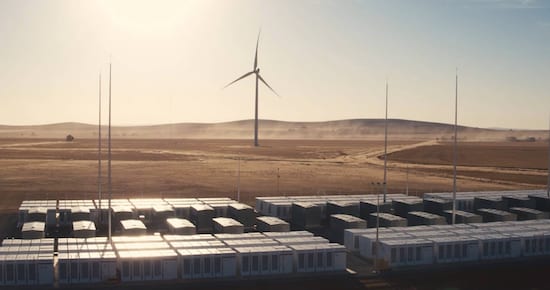It seems Australia will not be host to the world’s biggest lithium-ion battery storage installation for much longer: Tesla is talking to California utility PG&E for a battery plant with more than eight times the storage of its big battery in South Australia.
Keen readers may recall that Tesla boss Elon Musk, in his last earnings call, alluded to a potential “gigawatt hour” battery storage installation, far bigger than the 100MW/129MWh battery at the Hornsdale Power Reserve that has so captured the world’s attention.
It turns out that this gigawatt hour battery could be installed at the Moss Landing sub station in California, according to a regulatory filing submitted by the local utility PG&E. 
This table above suggests that PG&E is in talks with Tesla for a 182MW battery with four hours of storage, so 720MWh, although the detailed documents reportedly show that it could be up to 6 hours, so 1,100MWh.
And it is not the only one. PG&E is also talking to Dynergy about a 300MW battery with four hours of storage at a nearby transmission location, along with two other big battery storage projects with Hummingbird Energy (75MW, four hours), and Micronoc (10MW behind the meter, four hours).
Interestingly for Australian readers, where the government is proposing and supporting a series of massive pumped hydro projects (Snowy 2.0 and Tasmania’s battery of the nation), PG&E says it considers battery storage to be a cheaper alternative to “traditional” solutions like pumped hydro.
“Energy storage plays an increasingly important role in California’s clean energy future,” it says.
“And while it has been a part of PG&E’s power mix for decades – starting with the Helms Pumped Storage Plant in the 1980’s – recent decreases in battery prices are enabling energy storage to become a competitive alternative to traditional solutions.
“As a result, we believe that battery energy storage will be even more significant in enhancing overall grid reliability, integrating renewables, and helping customers save energy and money.”
PG&E says the Tesla battery would address local capacity requirements and will participate in the California Independent System Operator (CAISO) markets, providing energy and ancillary services.
That’s the same role t has been playing in the South Australia market, where it has helped slash the cost of grid services because it was able to smash the cartel previously formed by gas generators.
All the projects are located in an area that spans from Silicon Valley to the state’s central coast, and all the projects would be located around Moss Landing in the South Bay area.
The proposals from PG&E came in response to the state’s mandate that it have 1.3GW of storage in place by 2020, as California moves to a higher share of renewables. These project proposals result from a tender.
If approved by the state regulator, CPUC, PG&E says the first of the proposed projects is scheduled to come on-line by the end of 2019, with the other projects scheduled to come on-line by the end of 2020.








